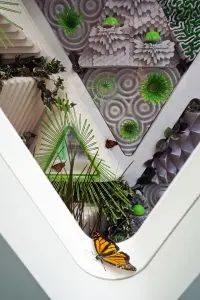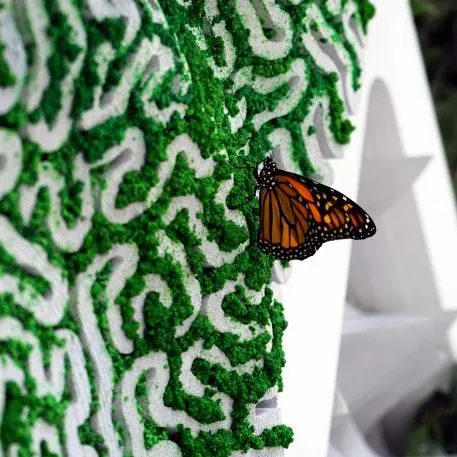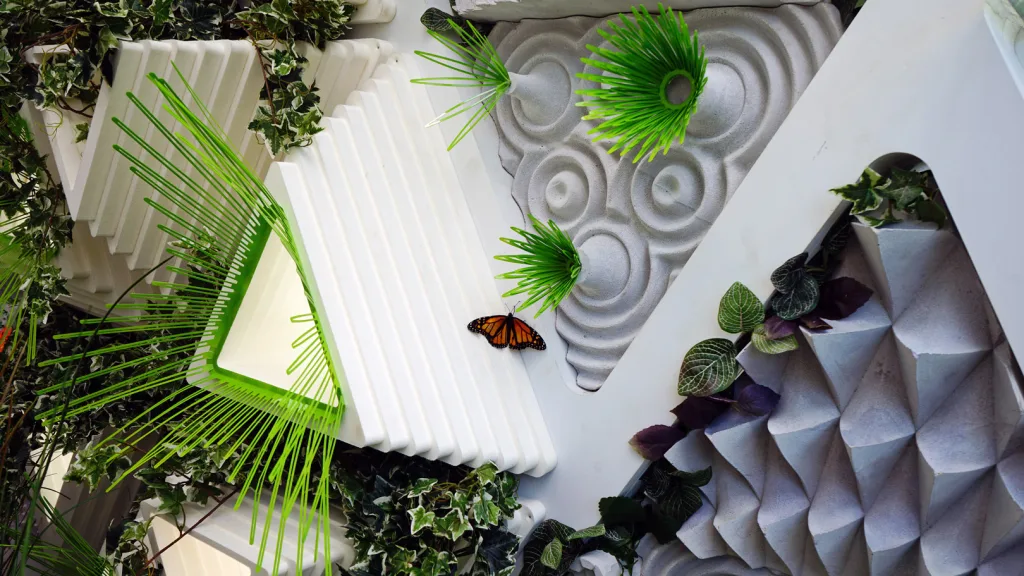On a new eight-story building planned for Manhattan’s Nolita neighborhood, the facade will double as a wildlife habitat. “It’s essentially a vertical meadow for butterflies,” says Mitchell Joachim, founder of Terreform One, the nonprofit architecture and urban design firm that designed the structure.
From offices inside, people will be able to look out into a terrarium attached to the wall, a climate-controlled space where suspended milkweed vines and flowers support monarch butterflies through their life cycle. Tiles that are 3D-printed from carbon-sequestering concrete will give the insects places to land. (BASF, the chemical company that makes the concrete, supported the project with a grant.) Gardens on the roof and a terrace will be filled with more pollinator-friendly plants.

Terreform One started considering how it could have more impact on issues related to climate change a couple of years ago. “We realized that what’s happening is literally extinction–to us and everything around us,” Joachim says. “The thought was we need to change our mantra from a group that’s consulting about the environment to a group that deals with design against extinction.”
As designers, they realized that they could influence habitat loss both through choices in urban design and in the design of individual buildings. Kenmare Continental Equities Group, which had plans to build the new office building, saw the firm’s approach for the facade as a fit. “Our vision was to create a very green, passive building that would be a positive contribution to the community,” says Andrew Kriss, vice president of the development company. “We saw this as something that could help redefine SoHo, redefine the consumer experience, and give to the community in ways that buildings have not done.”

Butterfly-size drones, from Intel, will monitor the air quality and other aspects of the environment, while algae helps purify the air. The building’s butterfly-friendly design makes it healthier in general, Joachim says. “Anything that’s good for monarchs is also great for humans,” he says. “So all the different control systems that are involved to keep the building comfortable are also great for people.”
At street level, LED screens will project magnified views of the butterflies and caterpillars in the terrarium. While it provides a respite for migrating insects, the project also has a larger goal of making the problem more visible to the public, so others can make the choice to plant pollinator gardens–and milkweed in particular, since the monarch butterfly relies on the plant.
The developers are currently working through the process of getting community approvals for the building. In the meantime, the designers have tested a full-scale version of the facade near their office at Brooklyn Navy Yard. They hope to install similar systems in other cities. “It’s deployable pretty much in any place that’s acceptable for monarchs,” says Joachim. He’s also advocating for green building-certification programs to give more consideration to biodiversity when they rate the sustainability of buildings.
The designers also want to work on the problem of extinction at the level of urban planning. Can African suburbs, for example, be designed in a way that supports giraffes passing through backyards? As a recent UN report outlines, 1 million species are now at risk of extinction. One key driver is the loss of habitat–and the amount of urban development continues to quickly grow. How it’s designed could help determine which species survive.
Recognize your brand’s excellence by applying to this year’s Brands That Matter Awards before the early-rate deadline, May 3.








